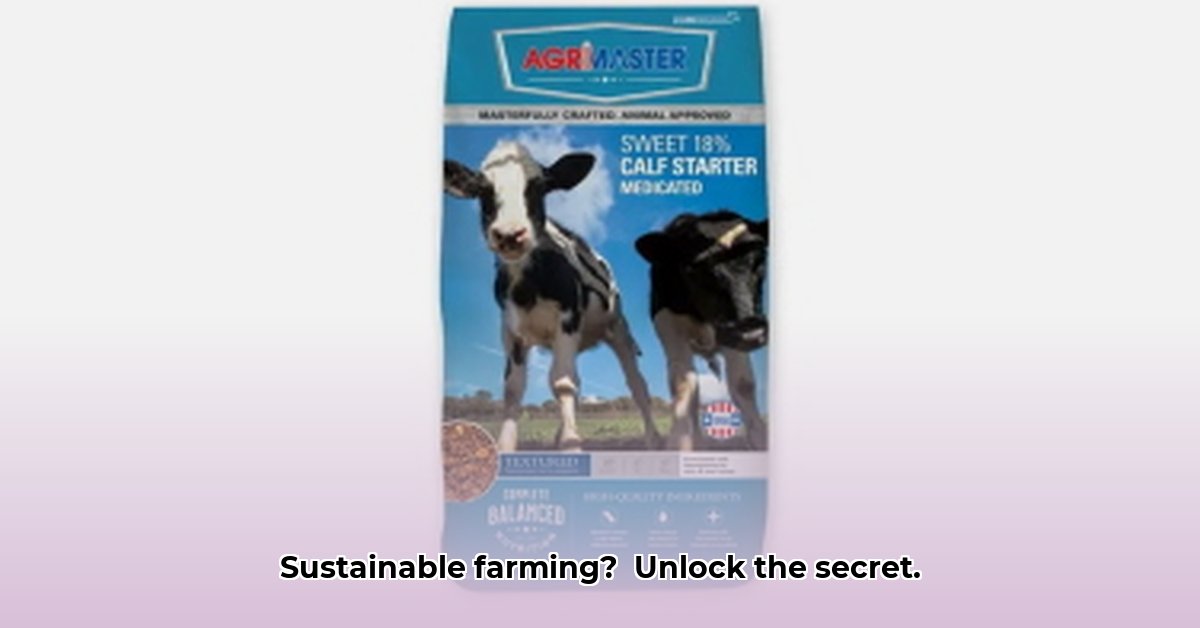
Raising healthy calves while minimizing environmental impact is a key concern for modern dairy farmers. Traditional methods often strain resources and raise ethical questions. Calf milk replacers, readily available at retailers like Tractor Supply, offer a potential solution, but careful consideration is needed. For more information on sustainable farming practices and resources, check out this helpful resource. This guide explores the use of calf milk replacers, focusing on products like Manna Pro Unimilk, analyzing their benefits and drawbacks, and outlining actionable steps for various stakeholders.
The Need for Sustainable Alternatives in Dairy Farming
Conventional dairy farming practices place considerable strain on the environment. High greenhouse gas emissions from livestock and manure management, alongside concerns about land use and water consumption, necessitate a shift toward more sustainable approaches. Ethical concerns regarding intensive farming practices and animal welfare further fuel the search for alternatives. Calf milk replacers present a potential pathway towards mitigating these issues, offering a more controlled and potentially resource-efficient feeding method.
Manna Pro Unimilk: A Case Study
Manna Pro Unimilk, available at Tractor Supply, is a multi-species calf milk replacer. Its advertised "Opti-Gut" blend aims to improve digestive health, potentially leading to healthier calves and reduced antibiotic use. However, comprehensive data on the long-term effects of Unimilk and similar products remain limited. Detailed nutritional comparisons with natural cow's milk are needed, alongside thorough life cycle assessments (LCAs) to evaluate the environmental impact of production and distribution. Currently, the available information is insufficient to fully assess its overall sustainability.
A Critical Assessment of Calf Milk Replacers
Choosing between traditional feeding methods and milk replacers requires a balanced assessment of advantages and disadvantages. Is the cost savings from using a multi-species formula truly realized on the farm? How does the environmental impact of manufacturing compare to traditional methods? These are crucial questions.
Advantages:
- Potential Cost Savings: Multi-species formulas can reduce costs associated with purchasing multiple products.
- Improved Gut Health: Enhanced formulations promote digestive health, potentially leading to healthier calves.
- Reduced Antibiotic Use: Healthier calves may require fewer antibiotics.
- Convenience and Efficiency: Milk replacers offer a controlled and streamlined feeding process.
Disadvantages:
- Limited Data: In-depth nutritional information and long-term health impact studies are lacking for many products. Are there hidden nutritional deficiencies?
- Cost-Effectiveness Uncertainty: A comprehensive cost-benefit analysis, considering all factors, needs conducting.
- Unknown Environmental Impact: Comprehensive LCAs are needed to definitively assess their environmental footprint.
- Potential Nutrient Gaps: Milk replacers might lack essential nutrients found in mothers' milk.
Actionable Steps for Stakeholders
Effective implementation of calf milk replacers requires a concerted effort from various stakeholders:
For Farmers:
- Conduct a small-scale trial to assess the product's efficacy on your farm. What are the results compared to what you already use?
- Meticulously monitor calf health and growth, noting any changes or adverse effects. What metrics will you use to assess success?
- Perform a thorough cost-benefit analysis that goes beyond mere product cost, including labor, healthcare, and other relevant factors.
- Adapt your feeding strategy based on your trial findings and subsequent analysis.
For Manufacturers:
- Ensure full transparency regarding product ingredients, manufacturing processes, and nutritional information. Are you providing access to this information?
- Conduct and publicly share comprehensive LCAs and environmental impact studies.
- Invest in research and development to create and market more sustainable formulas.
For Researchers:
- Conduct comprehensive LCAs to analyze the entire product lifecycle.
- Perform detailed nutritional comparisons with natural cow's milk.
- Carry out long-term studies to evaluate long-term effects on calf health and growth.
For Regulatory Bodies:
- Establish clear labeling standards and nutrient specifications for calf milk replacers.
- Develop policies aimed at supporting environmentally friendly manufacturing and usage practices.
Future Directions and Research Needs
Over the next 3-5 years, expect advancements in sustainable ingredient sourcing, specialized calf milk replacer formulations, and increased transparency. However, the future of sustainable calf milk replacers hinges on continued research and collaboration.
Comprehensive comparative studies evaluating the long-term economic and environmental impacts of milk replacers versus traditional feeding methods are crucial. This must include thorough investigation into the nutritional aspects and the potential mitigation of any nutrient deficiencies.
Conclusion
The use of calf milk replacers presents a promising avenue for improving the environmental and ethical sustainability of dairy farming. However, careful consideration of cost-effectiveness, nutritional adequacy, and environmental impacts is critical. A balanced approach combining innovation in product development with rigorous scientific scrutiny and transparent communication among all stakeholders will be key to ensuring responsible adoption of these products.